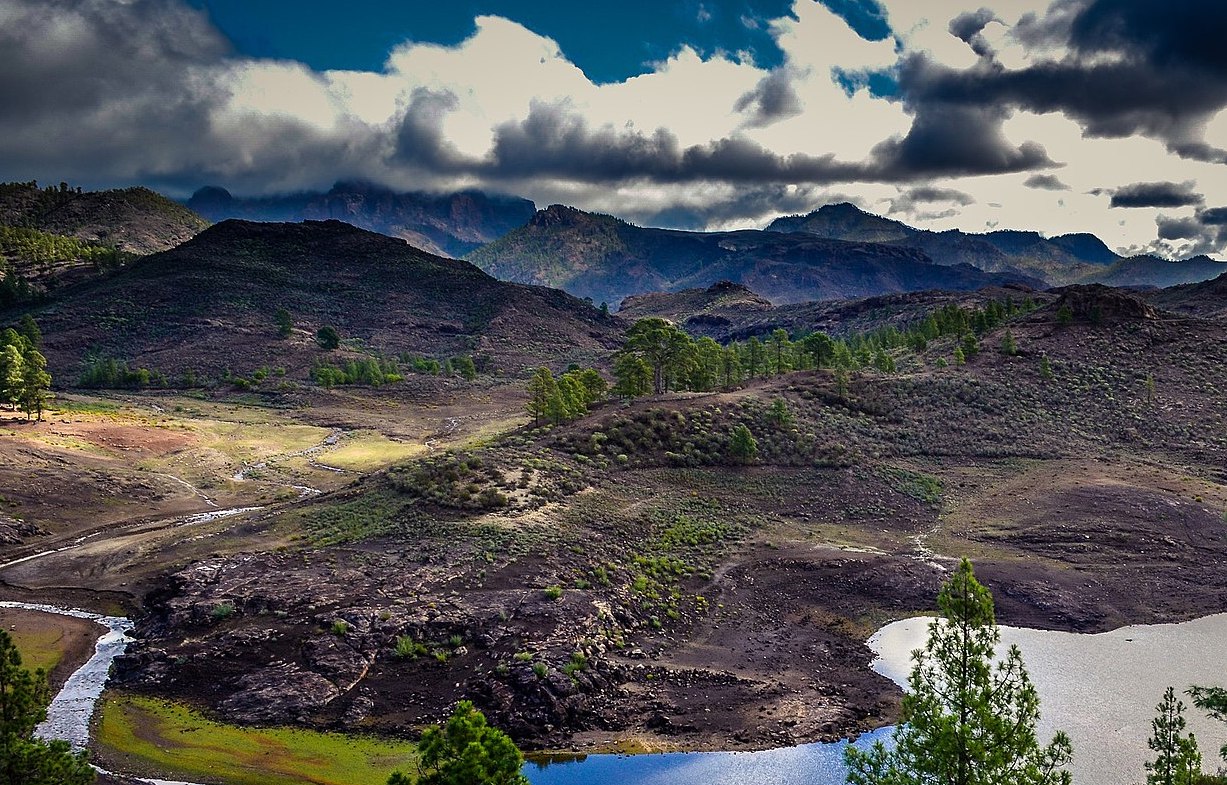Originally published: September 6, 2024
Media myth: Fossil fuels are making Texas, the capital of fossil fuels, more endangered by heat.
Truth: Fossil fuels have made Texas far safer than ever from climate, both from heat and the (far more dangerous) cold—but anti-fossil-fuel policies are stalling that progress.
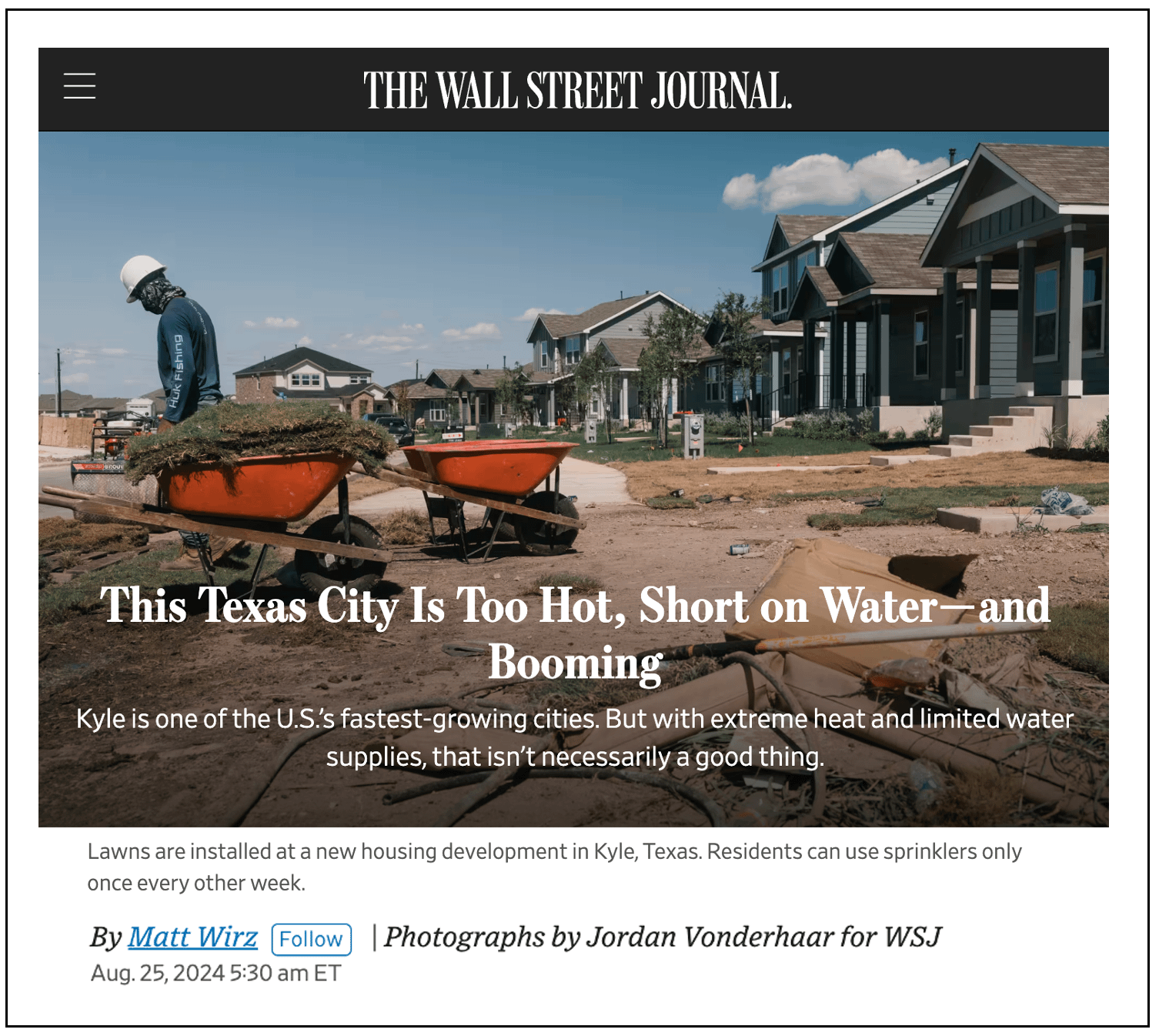
-
A recent Wall Street Journal article portrays Texas as threatened by fossil-fueled climate warming. But as evidence, they point to just 200 additional heat deaths, while ignoring the overall decline in climate deaths that fossil fuels helped cause.1
-
An objective account of climate danger and fossil fuels would look at what the general trend of climate danger is and what fossil fuels’ role is in that trend. Globally and in Texas, the answer is clear: climate danger is lower than ever, and we have fossil fuels to thank for it.
-
The global rate of climate-related disaster deaths has fallen 98% over the last century because of cost-effective energy from fossil fuels, which powers A/C to master heat, heating to master cold, irrigation to master drought, and storm warning systems to master storms.2
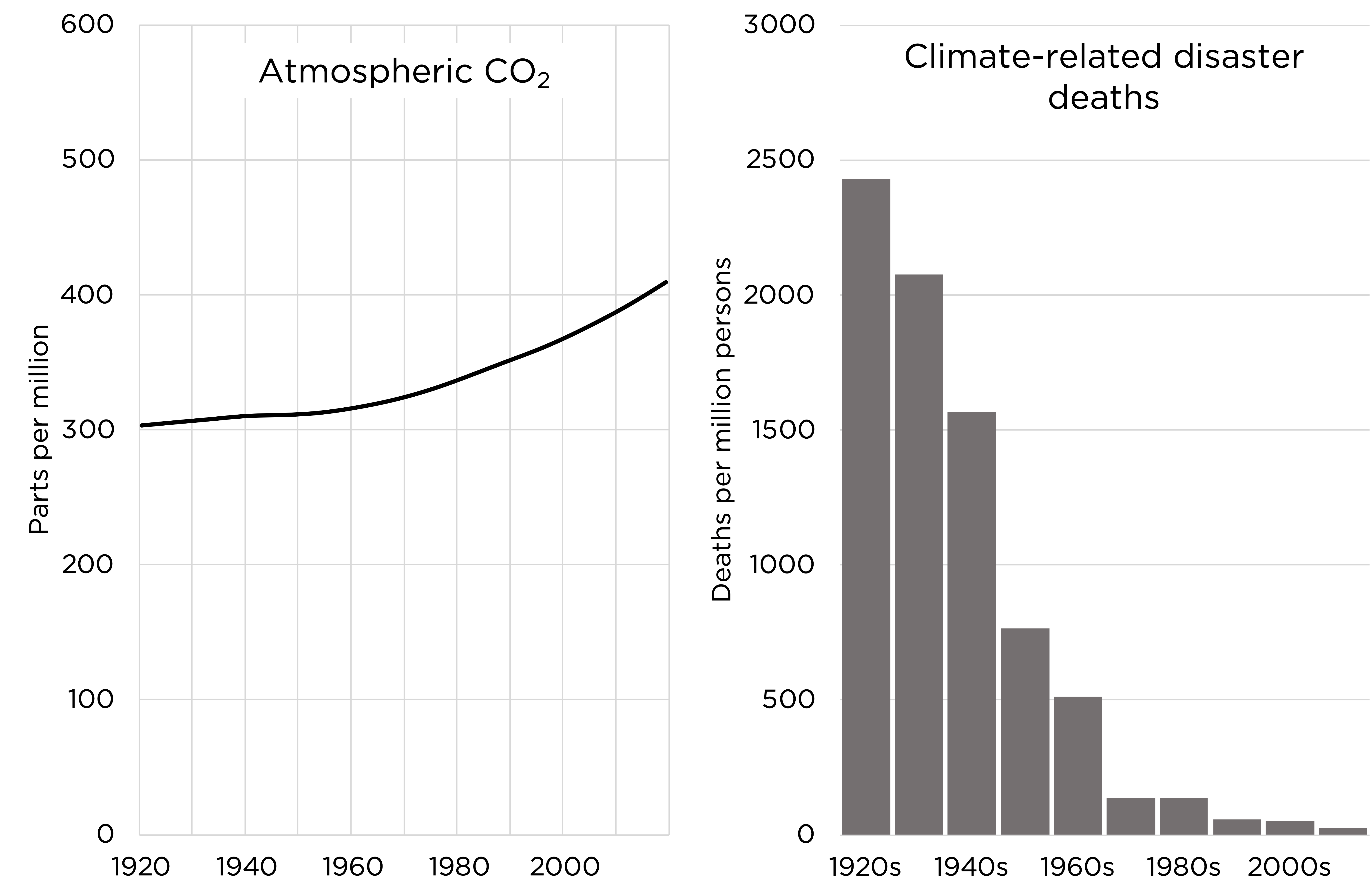
-
Instead of recognizing the reality that fossil fuels are making people safer from climate globally and in Texas, the WSJ cherry picks one data point to falsely portray fossil fuels as increasing climate danger: an increase of 200 in heat-related deaths since 2021.3

-
Obsessing about 200 additional heat deaths in Texas is dishonest given that cold kills far more than heat and fossil fuels have made us safer from both. So few people die from heat today that it is possible to make 200 extra deaths noticeable on a graph for a state with 30 million people!4
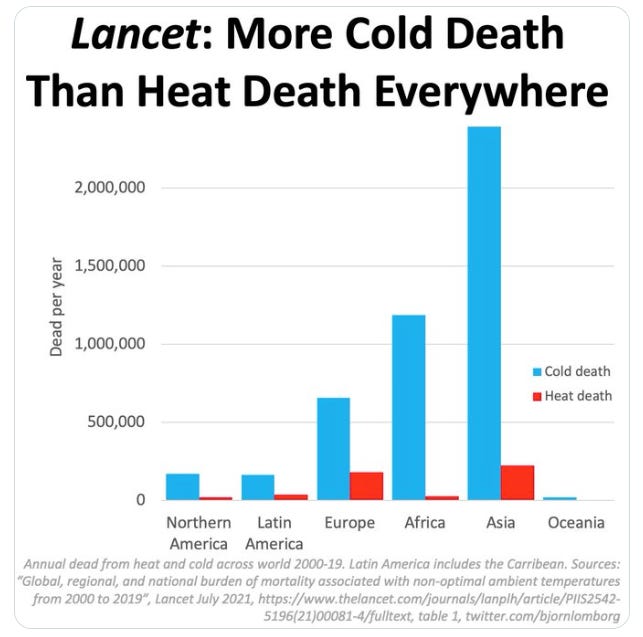
-
All else equal, we would expect heat deaths to increase, given that
(1) as populations grow, absolute deaths grow
(2) city sprawling creates concentrated heat islands that raise local temperatures Yet, despite a growing population, we see little change in US heat deaths long-term.5
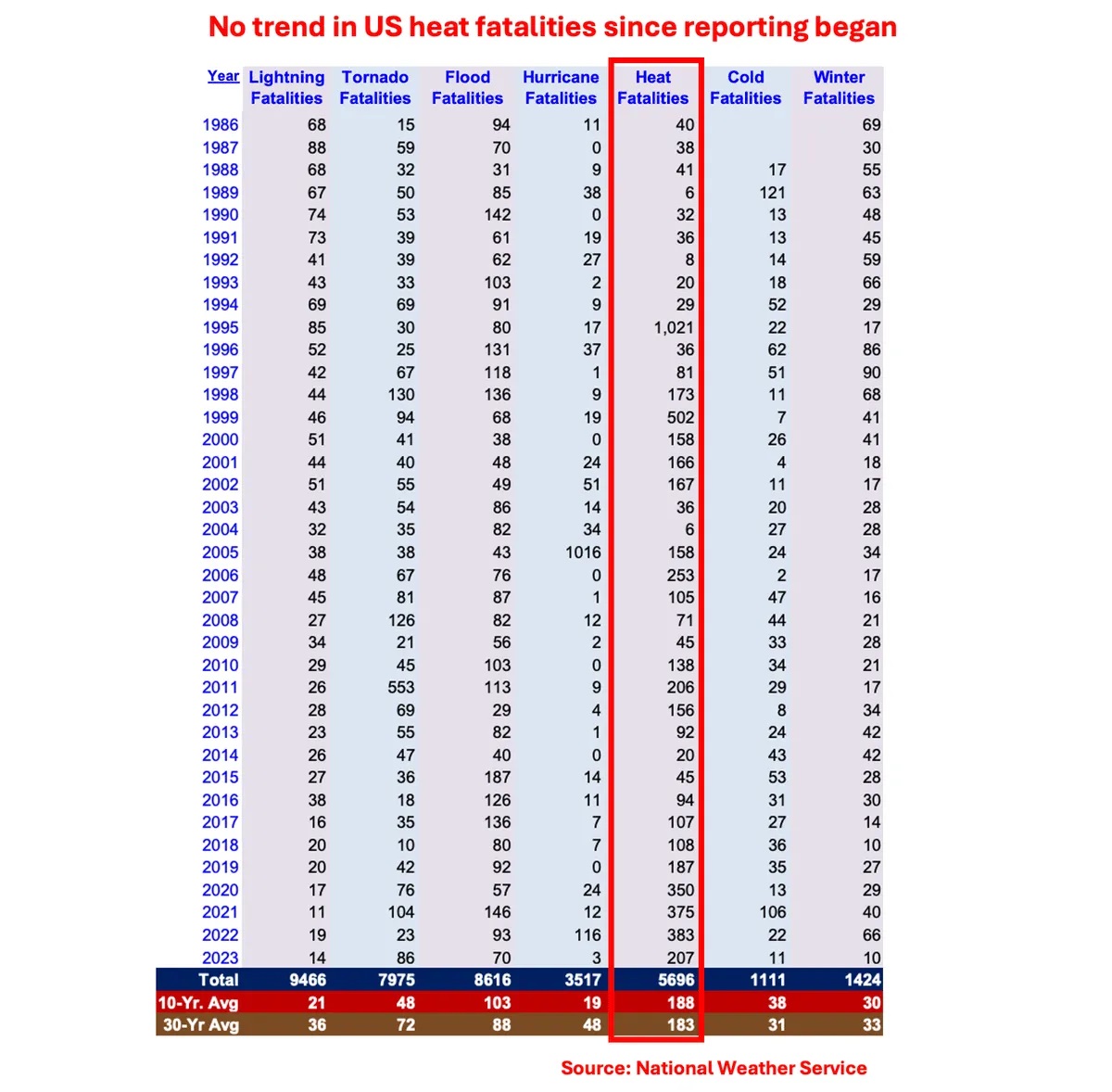
-
Even more dishonest than obsessing about a tiny amount of additional heat deaths in Texas is blaming it on fossil-fueled “climate change,” even though “climate change” is a slow trend on the scale of 30+ years and can’t be shown to cause an increase in deaths over 3 years.6

-
By blaming small numbers of climate deaths on the fossil fuels that have made the number of climate deaths small in the first place, the anti-fossil-fuel media justify a catastrophist agenda that will make us less safe from climate and far less prosperous overall.
-
Across America, the power grid is in decline due to policies that reward unreliable electricity, prematurely shut down coal plants, criminalize nuclear, and force EV use. And it’s about to get worse, as EPA’s power plant rules decrease electricity supply and AI increases demand.
Tech Giants Self-Made AI Energy Crisis
-
In Texas, grid-gutting policies are causing deadly blackouts and shortages. E.g., the February 2021 disaster was caused by inadequate investment in reliable power plants and their weatherization, which came to a head when unreliable solar/wind inevitably disappeared.
-
Anti-fossil-fuel policies increase climate danger by making it expensive or illegal for us to run the fossil fueled climate mastery machines that keep us safe from climate. Thus these policies are effectively anti-climate-safety— or pro-climate-danger—policies.
-
Texas is not in danger from fossil fuels, which have made climate far safer. The real danger facing Texas is anti-fossil-fuel policies—politically viable only thanks to false media reports of a dangerously hot world—which threaten to neuter their climate mastery capabilities.
Michelle Hung contributed to this piece.
References
-
WSJ - This Texas City Is Too Hot, Short on Water—and Booming↩
-
UC San Diego - The Keeling Curve
For every million people on earth, annual deaths from climate-related causes (extreme temperature, drought, flood, storms, wildfires) declined 98%--from an average of 247 per year during the 1920s to 2.5 per year during the 2010s.
Data on disaster deaths come from EM-DAT, CRED / UCLouvain, Brussels, Belgium – www.emdat.be (D. Guha-Sapir).
Population estimates for the 1920s from the Maddison Database 2010, the Groningen Growth and Development Centre, Faculty of Economics and Business at University of Groningen. For years not shown, population is assumed to have grown at a steady rate.
Population estimates for the 2010s come from World Bank Data.
-
WSJ - This Texas City Is Too Hot, Short on Water—and Booming↩
-
Bjorn Lomborg: Climate change and deaths from extreme heat and cold
Gasparrini et al. (2015) - Mortality risk attributable to high and low ambient temperature: a multicountry observational study↩
-
WSJ - This Texas City Is Too Hot, Short on Water—and Booming↩
